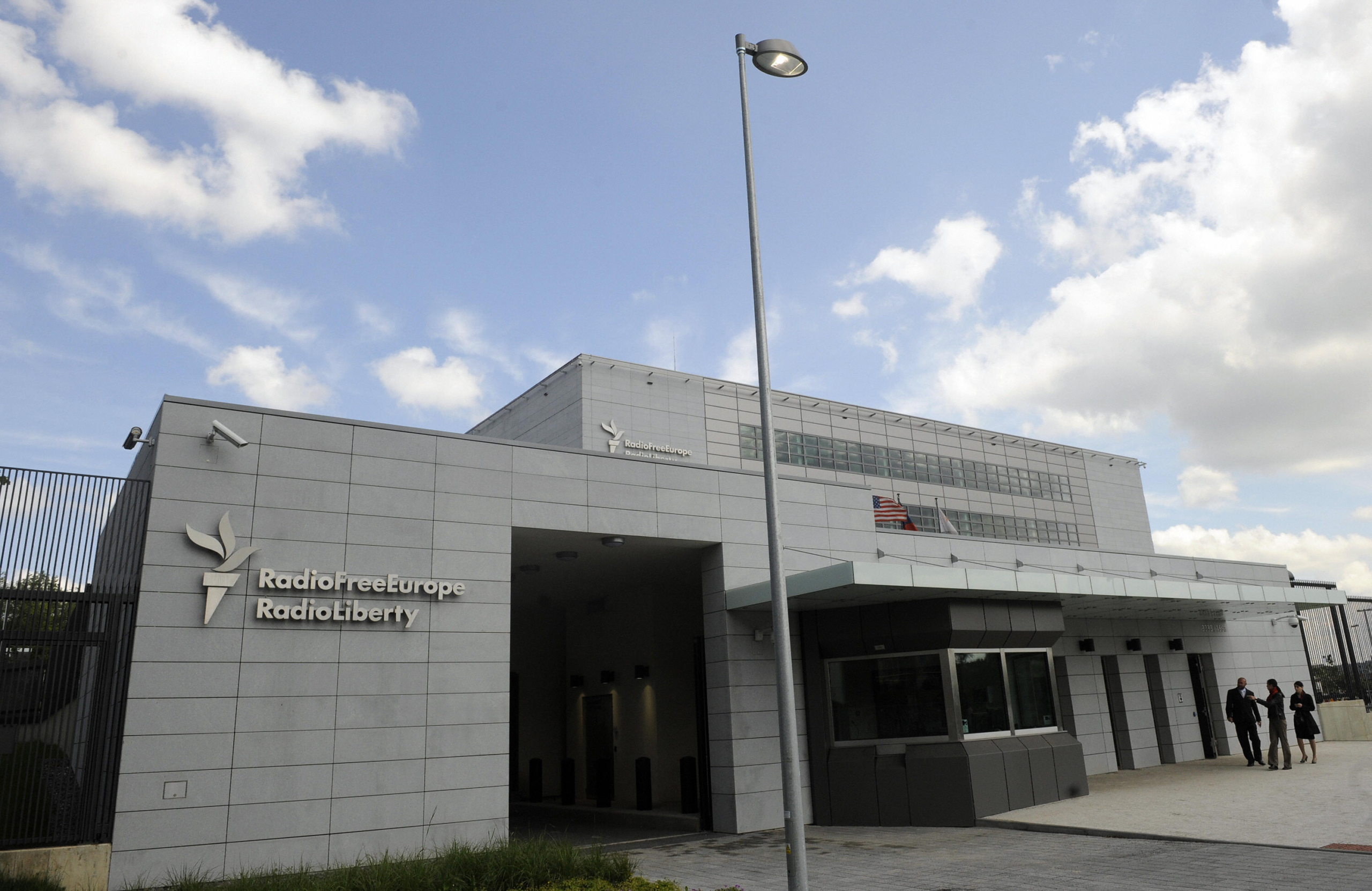Sign up for the daily CJR newsletter.
As Russian television cameras rolled, one of the last Ukrainian journalists remaining in the separatist-held Donbas region of the country stumbled over his espionage confession, barely five minutes long.
Stanislav Aseyev’s employer and colleagues said the confession, filmed by the network Rossiya 24 and published in August, was forced and false.
RELATED: The US still supports journalism around the world, even if Donald Trump doesn’t
“This was done to illustrate…that no Ukrainian journalist would ever want to go to the Donbas and write the truth about what is happening,” Denis Kaplunov, a friend of Aseyev, told Capital News Service. “They punished Stanislav to warn everyone else.”
Aseyev, 29, became a journalist for the US-funded Radio Free Europe/Radio Liberty four years ago. He has been held in a factory converted to a military base and prison by the Russian-backed separatist Donetsk People’s Republic, or DPR, since his capture from his hometown of Donetsk in June 2017.
Aseyev is one of 42 journalists from RFE/RL to have been killed, injured or imprisoned since 2018, according to the organization. “When Stas talked with our editors last time, he had no clue that he was being followed,” Maryana Drach, director of RFE/RL’s Ukrainian service told CNS.
RFE/RL was created during the Cold War to counter Soviet propaganda. It is now an independent news agency that reports in 22 countries, most of them former Soviet territories. Though still funded by Congress, US law prohibits control or interference by the US government.
The DPR, along with the Luhansk People’s Republic, both in the eastern part of the country, broke away from Ukraine in 2014. It is financially and militarily dependent on Russia, which seeks to pull Ukraine away from the west and towards the influence of Russian President Vladimir Putin, said former ambassadors to Ukraine John Herbst and Steven Pifer.
After the separatist takeover, news channels and publications were replaced by Kremlin-supported media, according to Gulnoza Said, Europe and Central Asia program coordinator for the Committee to Protect Journalists.
Journalists who wrote for Ukrainian publications had to decide whether to write investigative stories that would then be twisted into Russian propaganda, Alisa Sopova, a journalist from Donetsk, says. They also worried about how to report the truth while family and friends were caught in the violence. According to the Council of Europe, six journalists have been imprisoned since 2015 on allegations of treason and espionage. Four remain detained.
ICYMI: A journalist’s resurrection poses threat to public trust
Aseyev choose to stay in Donetsk, where his family lives. He felt an obligation to report what was happening during the media blackout, Drach says.
He was previously an academic, specializing in artificial intelligence. But his journalism has focused on the realities of city life. He has detailed how easy it was to vote multiple times in different districts around Donetsk during primary elections, and revealed that most of those participating in the elections were older retirees. “They are a chronicle of Russian aggression in the Donbas, through the eyes of a simple resident,” Kaplunov, his friend, says.
On June 2, 2017 at 6:25pm, Aseyev filed his last report for RFE/RL’s Donbas Realities, a radio program. He told his mother he would visit her the next day. She didn’t hear from him. When she and his friends visited his apartment, they found indications of illegal entry. His computer was missing. They, and his colleagues, feared the worst.
More than a month later, the DPR confirmed in a written statement sent to his mother that they were holding Aseyev. A year later, he surfaced on Rossiya 24 confessing to espionage.
Aseyev is being kept in the Isolyatsiya Art Centre, a former factory, turned art exhibit, turned military base. The only regular visitor he has been allowed is his elderly mother. (Attempts to reach her for this story were unsuccessful.)
On September 14, ambassador Toni Frisch of the Organization for Security and Cooperation in Europe visited Aseyev. ”Mr. Aseyev…confirmed to us that he has no major complaints about the place of detention, its medical care and nutrition,” Matthias Bosshard, a political advisor to Frisch, said.
A former professor of Aseyev’s, Ihor Kozlovsky, was detained in 2016 and held in basement prisons throughout Donetsk, although not in the same place as Aseyev. When Kozlovksy was released in 2017, he told the Ukrainian news organization Hromadske that the cells were so small he could barely move, and a hole in the floor served as a toilet. At times he had a sack over his head as interrogators shouted and pointed guns at him.
The US Department of State’s annual Human Rights Report on Ukraine described an extensive network of prisons in Donetsk. They are located in basements, sewage wells and garages and aren’t fit even for short-term detention, with reports of “shortages of food, water, heat, sanitation, and proper medical care.”
Aseyev’s colleagues say that the Trilateral Contact Group, an organization which hosts talks with representatives from the separatists, Ukraine, Russia, France and Germany, and which helped free Kozlovsky, is his best chance for freedom.
But nothing has been reported—no sign of a process moving forward—for several months. Aseyev’s colleagues, his friends and family, can only wait.
ICYMI: I wrote a story that became a legend. Then I discovered it wasn’t true.
Has America ever needed a media defender more than now? Help us by joining CJR today.







